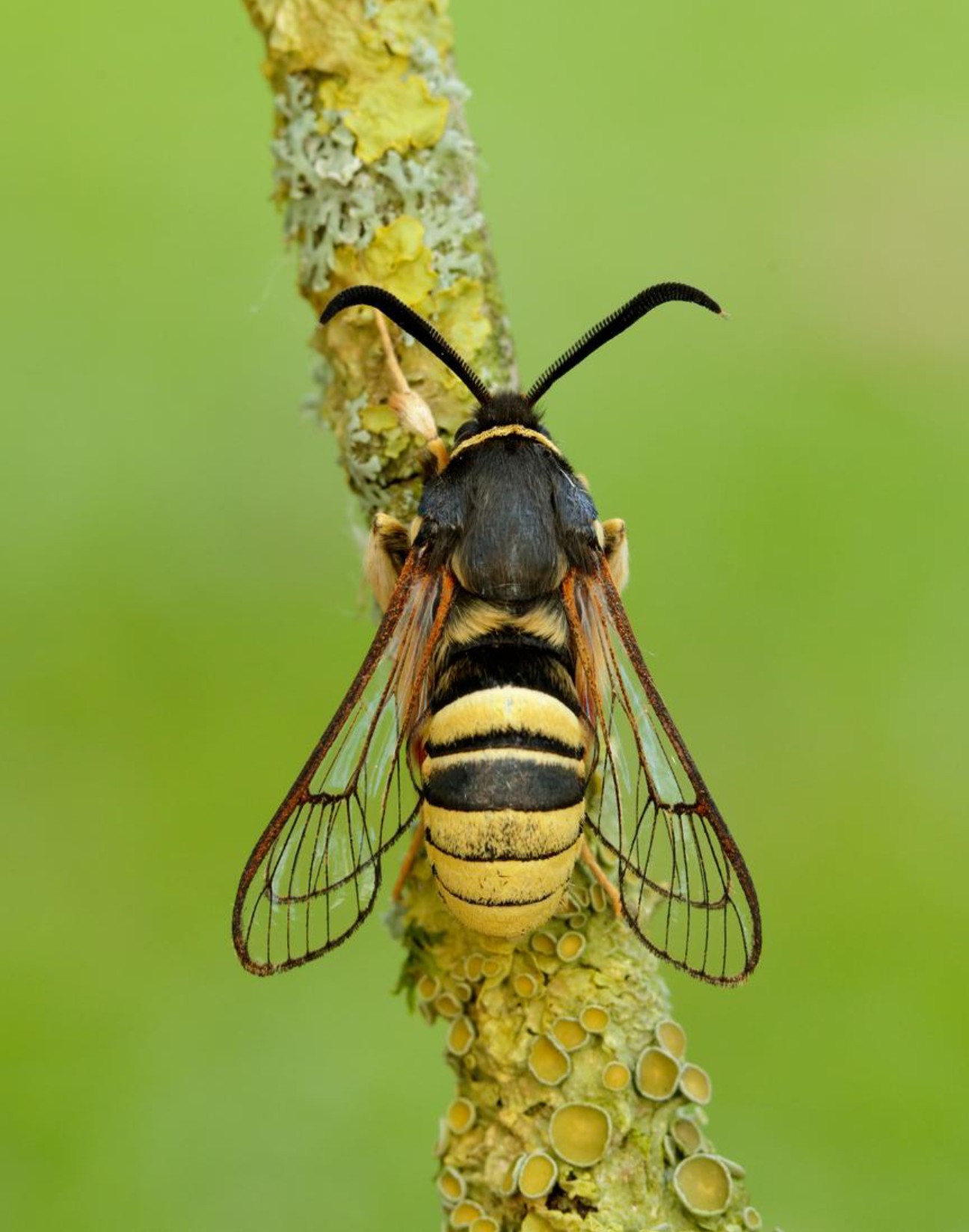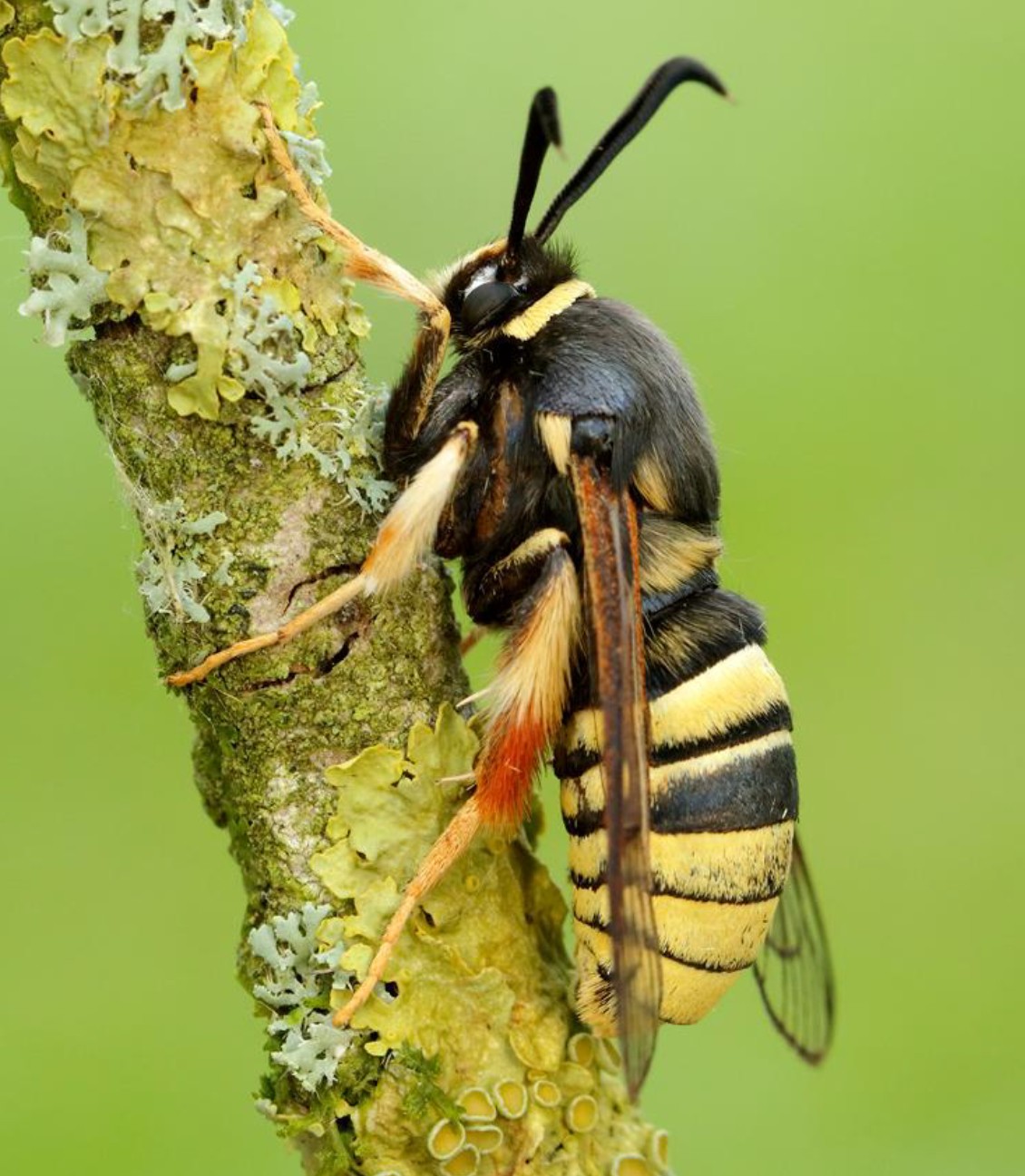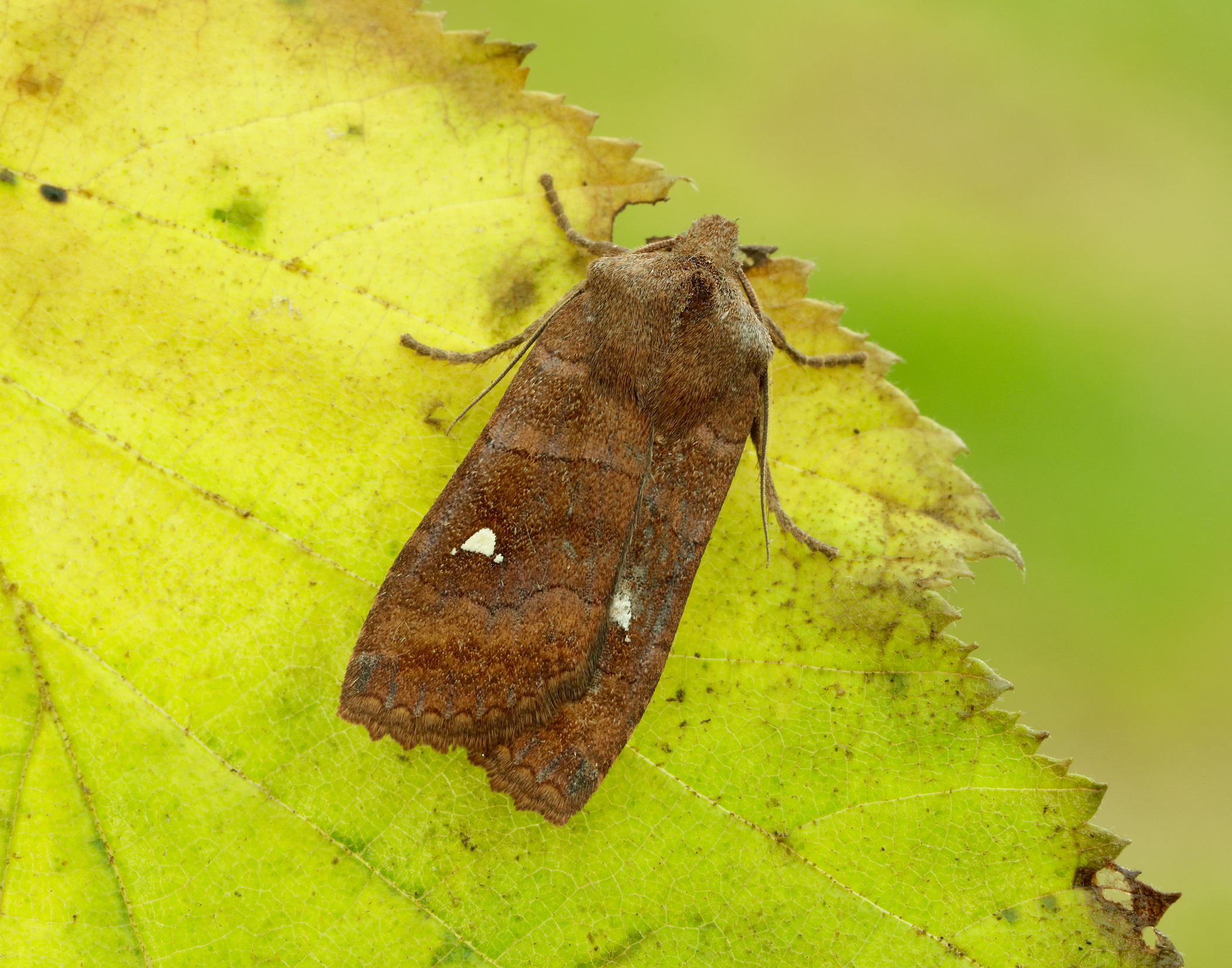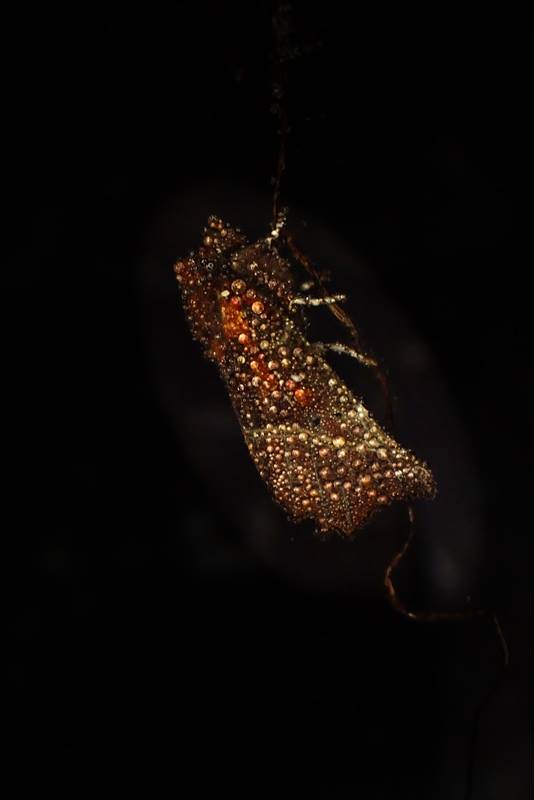This is some moth! A very convincing, day-flying wasp mimic with a swollen abdomen, black and yellow warning colours and clear wings. It also has a buzzing flight and pulsates its abdomen just like a wasp getting ready to sting! Although more that 20mm long this moth is harmless and very rarely seen despite its bold colouration. It is widespread in the UK except for the far north-west of Scotland and probably occurs everywhere that its food plant, sallow, grows. In Scotland it has been recorded most frequently in the Central Belt probably because so much recording is done there! In D&G we have 17 records, one old one (1837) from Dumfriesshire, 9 from Wigtownshire and 7 from Kirkcudbrightshire. Most of these are not records of the adult moth but of the tunnels made by the caterpillars which live deep in the trunk of the sallow! The eggs are laid singly by the female immediately after mating and the young larvae burrow into the lower part of the trunk and feed on the wood for two years until they mature and pupate. The emerging moths hatch through oval holes in the tree bark normally in the morning before the males fly off to look for a mate.
This is where the story takes a new twist. The males home in on the females by following their scent and this year for the first time an artificial pheromone has been produced which is very effective at attracting the flying males which are so rarely seen. Exposing this chemical during a still day can attract moths within the hour as the ones in these photographs by Iain were. The moths emerge from the middle of June to the end of July so there is just time to get some pheromone and see if this moth is found in any of your local damp woods. It is available for less than ten pounds from: https://www.angleps.com/pheromones.php . Obviously such an effective lure could attract a significant part of the local population so it needs to be used carefully so no moths are put at risk. My guess is that this moth is anywhere that has fair amounts of old sallows. It would be great to be proved right!





